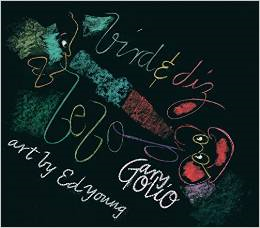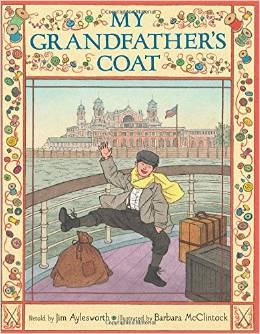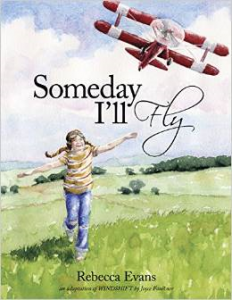Written by Lindsay Mattick
Illustrated by Sophie Blackall
Winnie-the-Pooh was real? Actually, the bear he was named after was real. This story written by Lindsay Mattick, is the truth behind the bear and his name. Lindsay is the great granddaughter of one of the main characters in the whole affair, Captain Harry Coleburn.
It seems a young Canadian vet headed off to war, saw a trapper with a bear cub and offered to buy it from him for $20, which really was a lot of money back then. The young vet kept the bear, trained it, so to speak, and named it Winnie, short for Winnipeg, to help the fellows in his unit from becoming too homesick. The bear was their mascot and traveled with them until it became too dangerous. Then he was donated to the London zoo, where he was often visited by a young boy named Christopher Robin Milne. Christopher took such a liking to Winnie that he went home and named his stuffed bear, Winnie. Well, we all know what happened then.
The story is told through beautiful lyrical language as, “the train rolled through dinner…”, and difficult to grasp philosophy, “sometimes one story must end so another can begin.” It includes humor and heartbreak, but most stunningly, the truth.
The watercolor illustrations are wonderfully done to realistically show children what soldiers training for the First World War looked like and how they lived. The back of the book is a collection of real photographs of the men, the bear, and even the journal in which Harry, the vet, kept his notes. The format reminds one of the many American Heritage Girl books, which were among the first to put a story at the front and the nonfiction correlation in the back. The illustrations are so stunning, they won the Caldecott Medal for this wonderful book.
Core curriculum standards can be attained by teachers and librarians in the areas of literacy, geography and history. It is wonderful book for teachers of writing to use as an illustration of how authors use the things around them every day in creation of stories. Children, parents, and grandparents alike will delight in getting to know a little bit more about their own favorite pooh bear,
 Title: Finding Winnie: The True Story of the World’s Most Famous Bear
Title: Finding Winnie: The True Story of the World’s Most Famous Bear- Author: Lindsay Mattick
- Illustrator: Sophie Blackall
- Publisher: Little Brown Books for Young Readers, 2015.
- Reviewer: Elizabeth Swartz
- Format: Hardcover, 56 pages
- ISBN: 978-0316324908
- Genre: Nonfiction Picture Book
- Grade level: K to 1
- Extras: photographs of the real people, real bear and the journal entries


 Title: My Grandfather’s Coat
Title: My Grandfather’s Coat